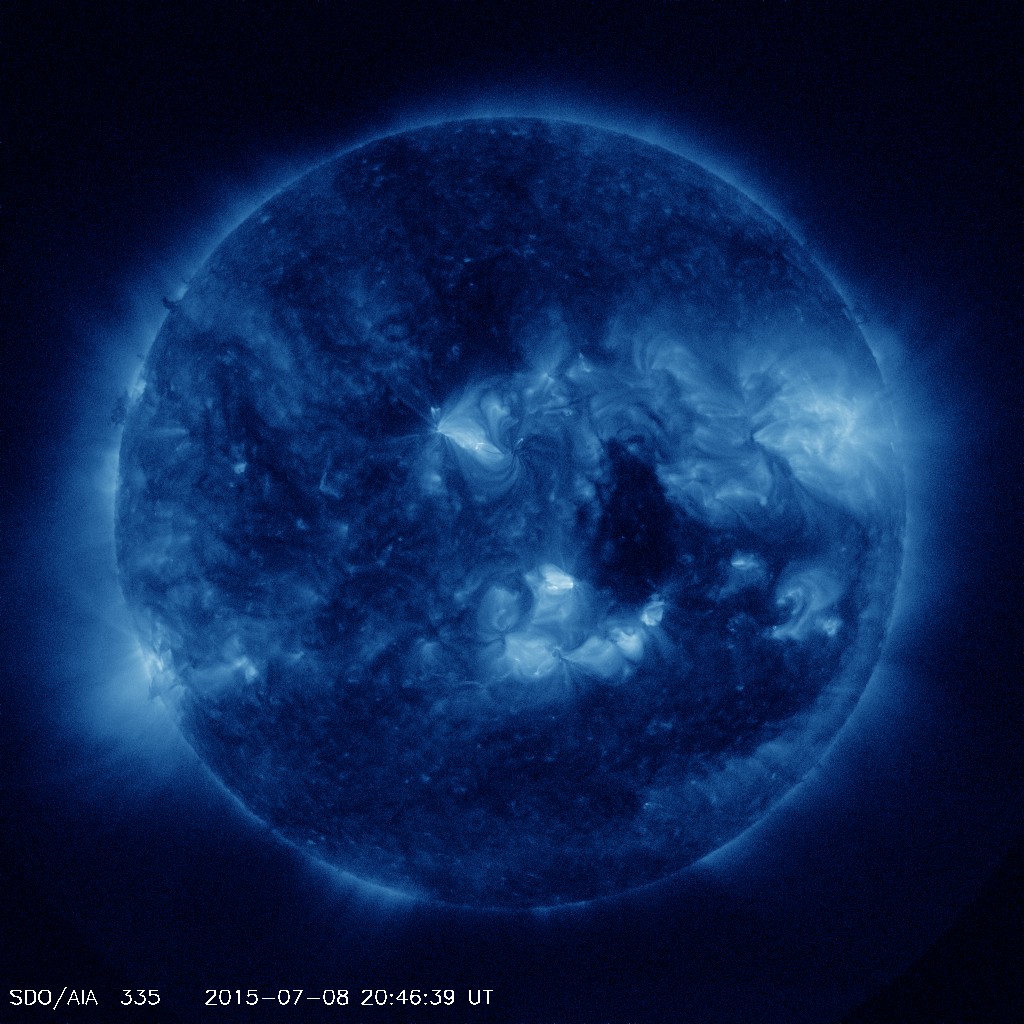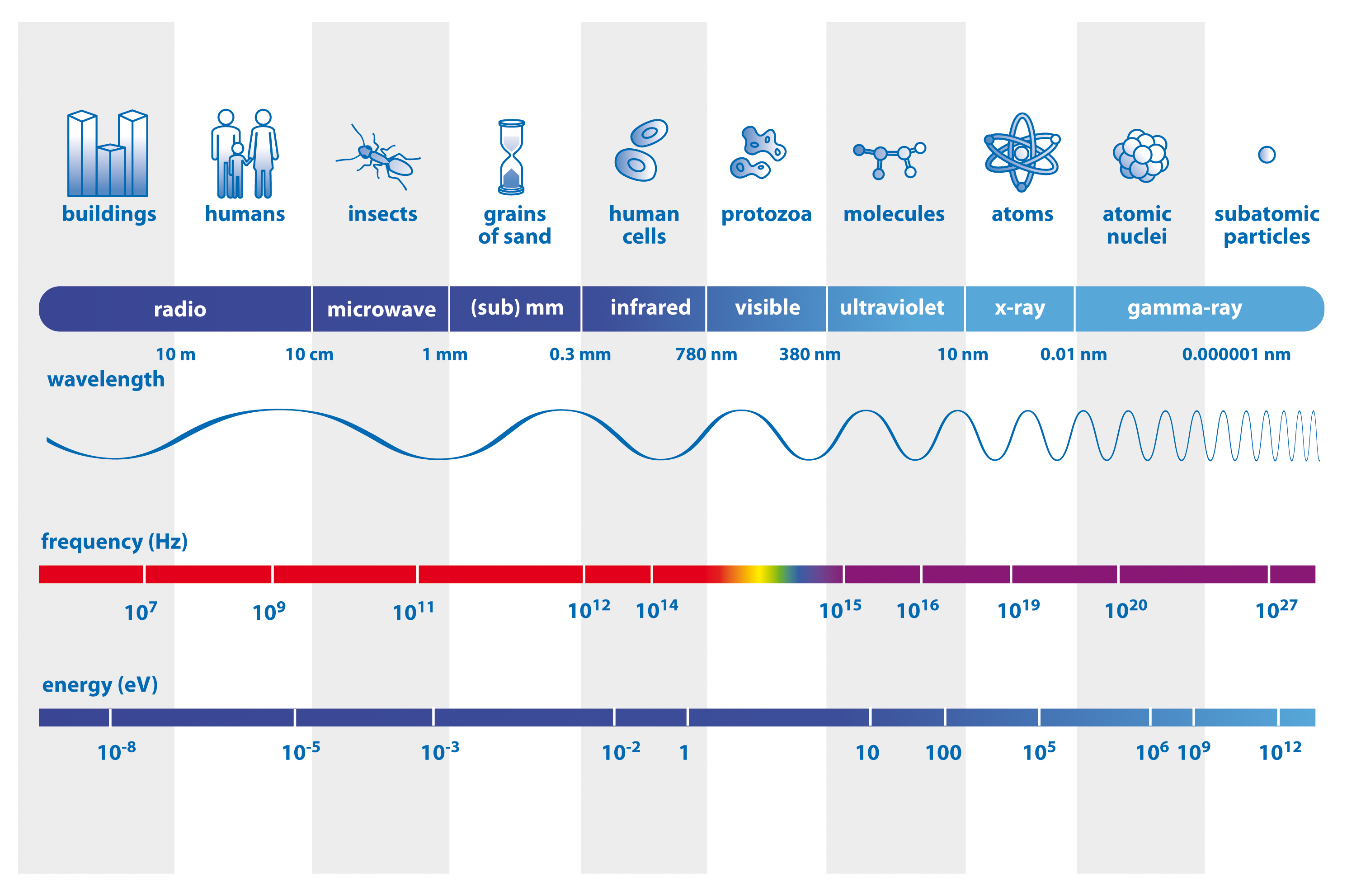What is Ultraviolet Light?
UV (Ultraviolet) Light refers to the region of the electromagnetic spectrum between visible light and X-rays, with a wavelength falling between 400 and 10 nanometers. This electromagnetic radiation is not visible to the human eye, because it has a shorter wavelength and higher frequency than the light our brain perceives as images. An easy way to remember UV light's placement on the electromagnetic spectrum is to examine the ends of the visible light spectrum: Red is the light with the longest wavelength, and Violet is the light with the shortest wavelength. Therefore, light with a wavelength longer than any light in the visible spectrum is called Infrared Light, and light with a wavelength immediately shorter than any light in the visible spectrum is called Ultraviolet Light.
What are the different types of UV Light?
Scientists categorize UV light into several different subtypes:
- UV-A light (320-400nm) is UV light with the longest wavelength, and the least harmful. It is more commonly known as "black light", and many use its ability to cause objects to emit fluorescence (a colored glowing effect) in artistic and celebratory designs. Many insects and birds can perceive this type of UV radiation visually, along with some humans in rare cases such as Aphakia (missing optic lens).
- UV-B light (290-320nm) causes sunburns with prolonged exposure along with increasing the risk of skin cancer and other cellular damage. About 95% of all UV-B light is absorbed by the ozone in Earth's atmosphere.
- UV-C light (100-290nm) is extremely harmful and is almost completely absorbed by Earth's atmosphere. It is commonly used as a disinfectant in food, air, and water to kill microorganisms by destroying their cells' nucleic acids.
When studying light passing through outer space, scientists often use a different set of UV subtypes dealing with astronomical objects. The first three are similar to the categorization most commonly used in Earth sciences:
- Near Ultraviolet (NUV) Light (300-400nm)
- Middle Ultraviolet (MUV) Light (200-300nm)
- Far Ultraviolet (FUV) Light (100-200nm)
The last UV subtype has the most energy and highest frequency of all UV radiation:
- Extreme Ultraviolet (EUV) Light (10-100nm) can only travel through a vacuum, and is completely absorbed in Earth's atmosphere. EUV radiation ionizes the upper atmosphere, creating the ionosphere. In addition, Earth's thermosphere is heated mainly by EUV waves from the Sun. Since solar EUV waves cannot penetrate the atmosphere, scientists must measure them using rockets and satellites.

What are the effects of UV radiation?
Prolonged exposure to UV-A and UV-B waves without adequate protection can have dangerous health consequences. For example, a person who is exposed to the sun for a few hours will develop a "sun tan", which is the result of melanin gathering in the skin in order to absorb UV rays and disperse them as heat. Sunscreen is a necessary precaution against UV radiation, since it provides a protective layer to absorb UV-A and UV-B waves before they can affect the skin. In cases of long exposure to the Sun's light without protection, a person's risk of skin cancer and other dangerous cellular afflictions greatly increases.
The eyes should also be protected from UV radiation when outside by wearing sunglasses designed to block out UV-A and UV-B rays. If one spends a large amount of time outside or in any environment with UV-A and UV-B radiation, they can develop short-term effects like Photokeratitis (known in some cases as arc-eye or snow blindness), or serious long-term conditions including cataracts which lead to blindness.
Image Credits


